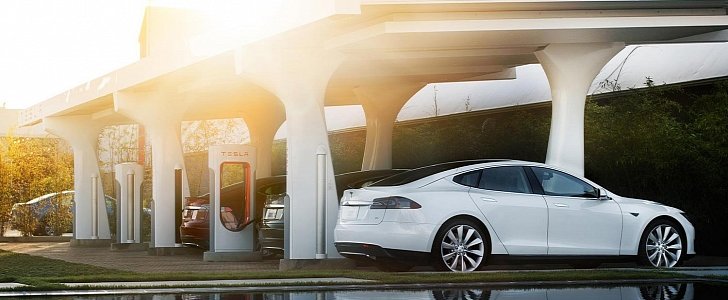One of the main reasons behind the relatively slow adoption of EVs is that people don't really know that much about them. They heard something about cars with batteries six years ago and they were bad, so they subject stopped being of any interest to them.
As we all know, the technology has moved forward quite a bit recently, and - like it or not - Tesla Inc. is one of the central culprits for that. Elon Musk's company proved that there is a market for battery-powered vehicles, and now every brand in the industry apparently is coming to claim it.
That means that when somebody who has worked on the battery technology for Tesla vehicles says something, you should probably listen carefully to what he has to say. Especially since it's something that might make life a lot easier for anyone driving an EV.
Alright, so you've bought yourself an electric car. That suggests you're not one of those completely ignorant of the subject, but you may still have a few fears, a few unanswered questions. Probably one of the most important ones has to do with battery degradation: how much of the initial mileage will the pack be able to offer a few years down the line?
The answer, apparently, is all down to the vehicle's owner. Sure, some losses will occur regardless of what you do - internal combustion engines lose power after a while too - but there are a few things to keep in mind.
Jeff Dahn is a battery researcher at the Dalhousie University and a close collaborator of Tesla's, and he's been monitoring the effects of charging and discharging rates on Tesla batteries. Currently, field data says that a Tesla pack will drop to about 90 percent of its capacity after 200,000 miles (320,000 km).
To make sure you get the most of your Tesla, Tesla says you should charge the battery as seldom as possible to 100 percent. A daily limit of 90 percent should do the trick, and only go all the way when taking longer trips.
However, for extreme preservation, Dahn says that research data shows 70 percent to be ideal. Lithium-Ion batteries don't like it when they're charged to the brim repeatedly, so 100 percent should be the exception, not the rule.
As a side note, a two-year-old Tesla Model S recently clocked over 300,000 miles (480,000 km), and the owner claimed that degradation at 200,000 miles was just six percent, which is considerably better than the 10 percent average.
Whether the driver of the record-holding Model S followed Dahn's advice or not isn't clear, but covering that distance while charging to 70 percent would have meant a lot of time spent at the Supercharger station. Well, it's not for us to comment on how people choose to live their lives.
That means that when somebody who has worked on the battery technology for Tesla vehicles says something, you should probably listen carefully to what he has to say. Especially since it's something that might make life a lot easier for anyone driving an EV.
Alright, so you've bought yourself an electric car. That suggests you're not one of those completely ignorant of the subject, but you may still have a few fears, a few unanswered questions. Probably one of the most important ones has to do with battery degradation: how much of the initial mileage will the pack be able to offer a few years down the line?
The answer, apparently, is all down to the vehicle's owner. Sure, some losses will occur regardless of what you do - internal combustion engines lose power after a while too - but there are a few things to keep in mind.
Jeff Dahn is a battery researcher at the Dalhousie University and a close collaborator of Tesla's, and he's been monitoring the effects of charging and discharging rates on Tesla batteries. Currently, field data says that a Tesla pack will drop to about 90 percent of its capacity after 200,000 miles (320,000 km).
To make sure you get the most of your Tesla, Tesla says you should charge the battery as seldom as possible to 100 percent. A daily limit of 90 percent should do the trick, and only go all the way when taking longer trips.
However, for extreme preservation, Dahn says that research data shows 70 percent to be ideal. Lithium-Ion batteries don't like it when they're charged to the brim repeatedly, so 100 percent should be the exception, not the rule.
As a side note, a two-year-old Tesla Model S recently clocked over 300,000 miles (480,000 km), and the owner claimed that degradation at 200,000 miles was just six percent, which is considerably better than the 10 percent average.
Whether the driver of the record-holding Model S followed Dahn's advice or not isn't clear, but covering that distance while charging to 70 percent would have meant a lot of time spent at the Supercharger station. Well, it's not for us to comment on how people choose to live their lives.

